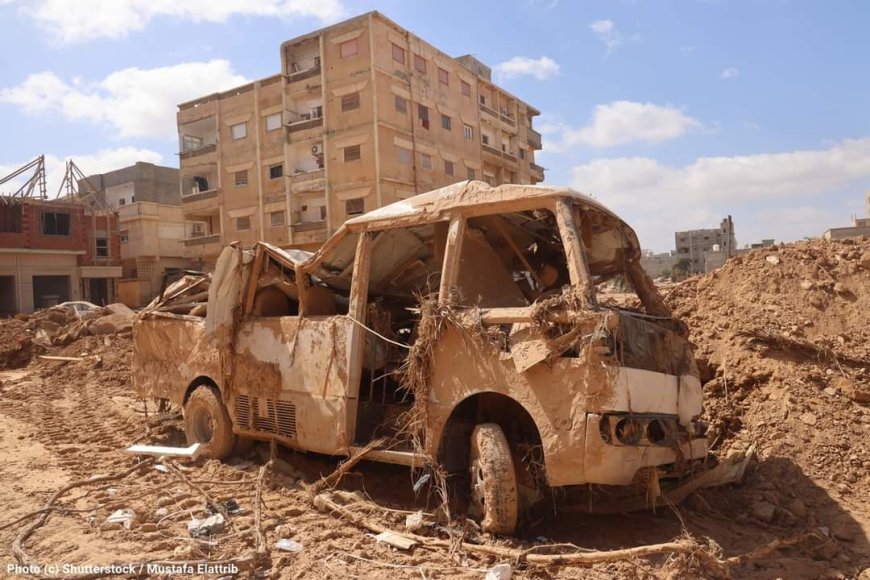مخاطر الكوارث واضرارها مدينة دنيال أنموذج .

(أبين الآن) متابعات
قبل عام واحد، في 10 سبتمبر/أيلول 2023، ضربت العاصفة دانيال البلاد، مما تسبب في كارثة أودت بحياة أكثر من 4,300 شخص، ولا يزال أكثر من 8,500 في عداد المفقودين. جلبت العاصفة معها طقسًا قاسيًا وهطول أمطار غزيرة مفاجئة أثرت على عدة مناطق. أدى انهيار سدين في درنة ليلة 10-11 سبتمبر إلى إطلاق ما يقرب من 30 مليون متر مكعب من المياه، مما تسبب في فيضانات كارثية.
تعد الفيضانات من أكثر المخاطر الطبيعية تدميرًا. وبينما لا يمكن منعها، يمكن تقليل آثارها. لم تكن مأساة ليبيا نتيجة لعاصفة قوية فحسب، بل كانت ناتجة عن ضعف المدينة، الناجم عن سنوات من الصراع والبنية التحتية المهملة، مما أدى في النهاية إلى وقوع الكارثة.
يؤكد هذا الحدث المدمر الحاجة الملحة للاستثمار في تعزيز القدرة على الصمود. إن تعزيز قدرة الدول على تحمل مثل هذه الكوارث، خصوصًا من خلال مبادرات مثل الإنذار المبكر للجميع، أمر بالغ الأهمية. إن نظام الإنذار المبكر لا يكون قويًا إلا بقدر أضعف نقاطه. فإصدار التحذيرات وحده لا يكفي؛ بل يجب أن تكون المعلومات المتعلقة بالمخاطر شاملة، ويجب أن تؤدي التنبيهات إلى اتخاذ إجراءات مبكرة.
وفيما نتذكر الأرواح التي فُقدت والأشخاص المفقودين، يجب علينا أيضًا أن نلتزم بالعمل. على الجهات المانحة والشركاء والمجتمع الدولي العمل معًا لتعزيز قدرات الإنذار المبكر واتخاذ الإجراءات اللازمة، خاصة في المناطق الأكثر عرضة للخطر. عندما تفشل كل المحاولات الأخرى وتتعرض الأرواح للخطر، تشكل هذه الأنظمة الضمانة الأخيرة.
#إعصار_دانيال
------
One year ago, on 10 September 2023, Storm Daniel made landfall in #Libya, triggering a disaster that claimed the lives of over 4,300 people, with more than 8,500 still missing. The storm brought severe weather and sudden heavy rainfall that affected several regions in the country. The collapse of two dams in Derna on the night of September 10–11 released an estimated 30 million cubic meters of water, causing catastrophic flooding.
Floods are among the most destructive natural hazards, and while they cannot be prevented, their impacts can be minimized. The tragedy in Libya was not just the result of a powerful storm, it was the city’s vulnerability, stemming from years of conflict and neglected infrastructure, that ultimately caused the disaster.
This devastating event underscores the urgent need for investment in resilience. Enhancing a country’s capacity to withstand such disasters, particularly through initiatives like Early Warnings for All, is crucial. An early warning system is only as strong as its weakest point. It is not enough to issue warnings; risk information must be comprehensive, and alerts must trigger early actions.
As we remember the lives lost and those still missing, we must also commit to action. Donors, partners, and the international community must work together to strengthen early warning and action capacities, especially in vulnerable and fragile regions. When all else fails and lives are put in danger, these systems are the last safeguard.
منقول من موقع undrr
https://www.facebook.com/share/CC8RSACfNTbSzfUy/?mibextid=oFDknk




